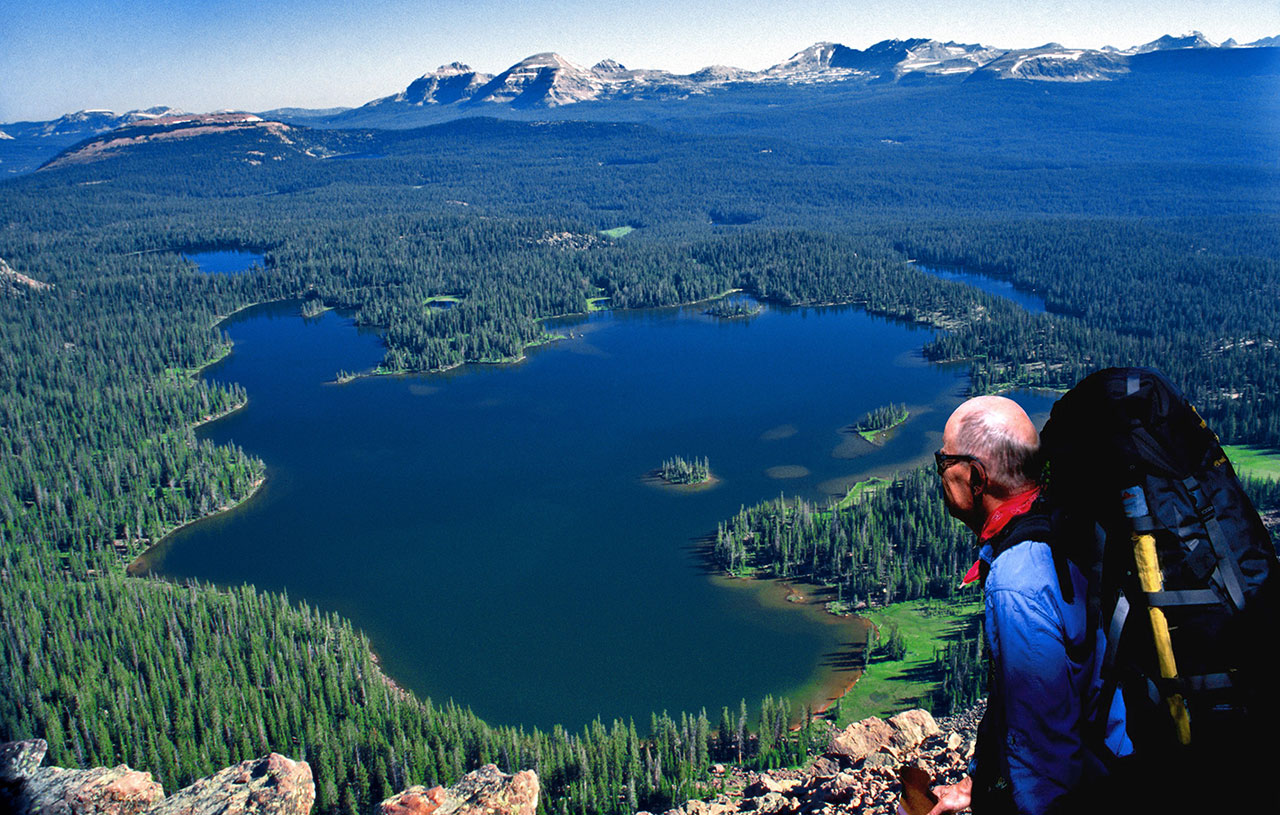General Things To Consider
The information here gives general guidance about trip planning in wilderness. Be sure to check whether specific regulations exist for the area you plan on visiting, and be sure to contact the area's managing office for additional recommendations on trip planning.

Leave No Trace Principles
-
Know the regulations and special concerns for the area you'll visit.
-
Prepare for extreme weather, hazards, and emergencies.
-
Schedule your trip to avoid times of high use.
-
Visit in small groups. Split larger parties into smaller groups.
-
Repackage food to minimize waste.
-
Use a map and compass to eliminate the use of marking paint, rock cairns or flagging.
Travel and Camp on Durable Surfaces
-
Durable surfaces include established trails and campsites, rock, gravel, dry grasses or snow.
-
Obey camping setbacks (if they exist) from lakes, streams, trails, other campsites, and historic and cultural sites and structures.
-
Good campsites are found, not made. Altering a site is not necessary.
-
In popular areas:
-
Concentrate use on existing trails and campsites.
-
Walk single file in the middle of the trail, even when wet or muddy.
-
Keep campsites small. Focus activity in areas where vegetation is absent.
-
-
In pristine areas:
-
Disperse use to prevent the creation of campsites and trails.
-
Avoid places where impacts are just beginning.
-
-
Pack it in, pack it out. Inspect your campsite and rest areas for trash or spilled foods. Pack out all trash, leftover food, and litter.
-
Deposit solid human waste in catholes dug 6 to 8 inches deep at least 200 feet from water, camp, and trails. Cover and disguise the cathole when finished.
-
Pack out toilet paper and hygiene products.
-
To wash yourself or your dishes, carry water 200 feet away from streams or lakes and use small amounts of biodegradable soap. Scatter strained dishwater.
-
Preserve the past: examine, but do not touch, cultural or historic structures and artifacts.
-
Leave rocks, plants and other natural objects as you find them.
-
Avoid introducing or transporting non-native species.
-
Do not build structures, furniture, or dig trenches.
-
Campfires can cause lasting impacts to the backcountry. Instead, consider using a lightweight stove for cooking and a candle lantern for light.
-
If fires are permitted:
-
Use established fire rings, fire pans, or mound fires.
-
Keep fires small. Only use sticks from the ground that can be broken by hand.
-
Burn all wood and coals to ash, put out campfires completely, then scatter cool ashes.
-
-
Observe wildlife from a distance. Do not follow or approach them.
-
Never feed animals. Feeding wildlife damages their health, alters natural behaviors, and exposes them to predators and other dangers.
-
Protect wildlife and your food by storing rations and trash securely.
-
Control pets at all times, or leave them at home.
-
Avoid wildlife during sensitive times: mating, nesting, raising young, or winter.
Be Considerate of Other Visitors
-
Respect other visitors and protect the quality of their experience.
-
Be courteous. Yield to other users on the trail.
-
Step to the downhill side of the trail when encountering pack stock.
-
Take breaks and camp away from trails and other visitors.
-
Let nature's sounds prevail. Avoid loud voices and noises.
The above information is adapted from the Leave No Trace: Center for Outdoor Ethics. For more detailed information on the seven principles of Leave No Trace and suggestions you can use to help plan a trip to wilderness, click on the links above.
General Equipment List
-
Tent
-
Sleeping bag with stuff sack
-
Backpack
-
Clothing
-
Hiking boots (broken in and waterproofed)
-
Socks (wool and liner)
-
Jacket/sweater
-
Rain gear
-
Hat and/or stocking cap
-
Shirts (long- and short-sleeve), pants, shorts (pack according to the climate you will be traveling in)
-
-
Cook stove with extra fuel bottle
-
Cook pans
-
Waterproof matches or lighter
-
Bear canister (if traveling in bear country)
-
Rope (long enough to hang food, if necessary)
-
Cup, bowl, spoon, fork, knife (sharpened)
-
Water bottles or canteens
-
Water filter or water treatment kit
-
Garbage bags, ziplock-type bags (for packing out waste and repackaging food)
-
Sun glasses
-
Mosquito repellent, chapstick, sun screen
-
Toilet paper (in plastic bag with additional plastic bag for packing out used paper)
-
Flashlight or headlamp (with extra batteries and bulb), candle lantern
-
Toiletries (toothbrush/paste, personal medications etc.)
-
First-aid kit, emergency survival blanket
-
Repair kits for your stove, tent, backpack, hiking boots etc.
-
Camera, binoculars
-
Maps, compass, field guide, guidebook